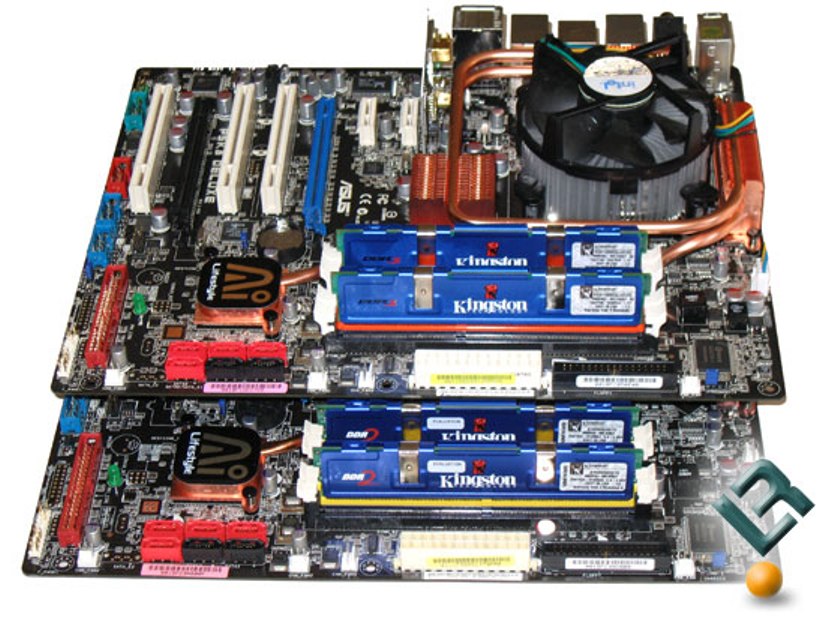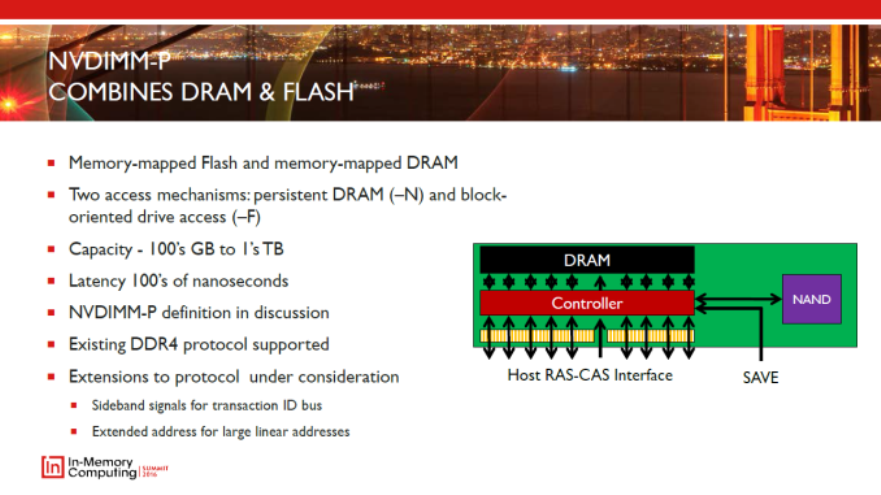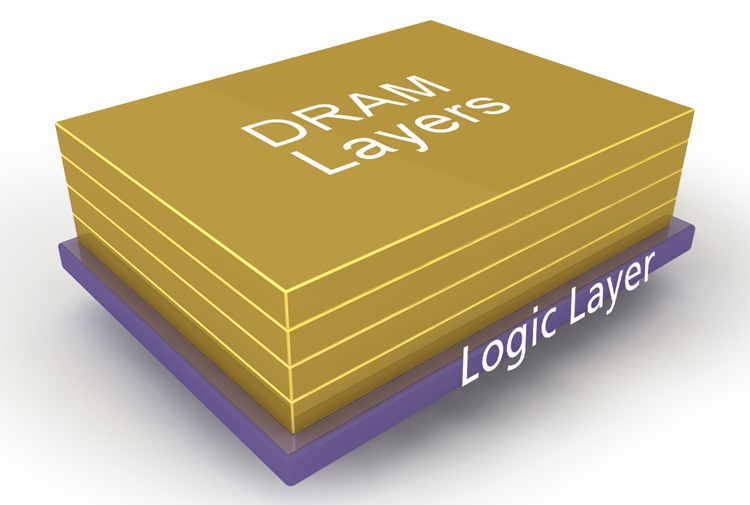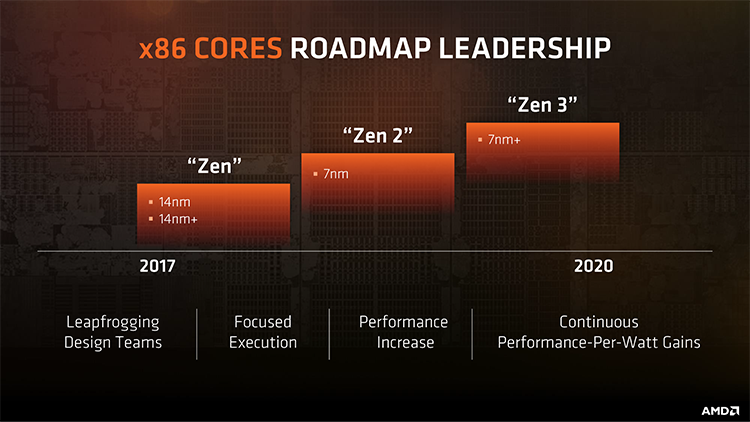The change of generations of RAM always took place slowly, with a huge number of approvals, a significant delay between the specifications "on paper" and the first modules "in hardware". But DDR4 has not even had time to pall, and will soon be recognized as an outdated standard. Why such a hurry, and will not the new standard be a “marketing dummy”?

How to escort SDRAMs - not at all like the GPU
The revolutions that the JEDEC Standardization Committee has been talking about for so long take place much slower than they are approved on paper. If we leave aside the battle “DDR SDRAM vs RDRAM” and focus on modernity, a gulf developed between the initial specifications of the DDR-II standard in 2002 and the release of memory “to the people”. In 2004, the first commercial low-frequency modules DDR2-533 competed with their predecessors in the face of DDR-400 in grief in half, and throughput grew only at the cost of a terrifying increase in delays. DDR2 became really useful in 2005, when processors with a system bus frequency of 1066 MHz fell in price, and Intel released the i965 mainstream chipsets for the Core 2 Duo in 2006. That is, since the announcement, it took four years for DDR2 to cease to be part of the “technology exhibition” and become a truly effective and inexpensive type of memory.
The transition from DDR2 to DDR3 took place much faster - in 2007, Intel rolled out the P35 Express chipsets (for Core 2 Duo, when they were in their prime) with the support of a new type of RAM. It is now that the controllers have moved under the processor cover and, more often, the CPU decides what memory the computer will work with. And in the recent past, it was possible to change the memory to DDR3 by purchasing a new motherboard - no one “asked for the opinion” of the processor that was built in the era of DDR2.

Motherboards based on the Intel P35 chipset came with a DDR2 and DDR3 controller (photo:
Legitreviews )
AMD already in those years moved the RAM controller under the processor cover, but gave it support for both DDR2 and DDR3. Even the sockets pleased meritorious backward compatibility (but today the buyers of flagship motherboards for LGA1151 with the release of new processors for the same LGA1151
should buy a new motherboard, param-memory). There is no money - you
keep with luck and good mood you install the new Athlon in the motherboard with an AM2 + socket and you are content to support DDR2.
And if you have a budget, you buy a new motherboard and DDR3 memory, and even bring the frequency from “children's” 1066 to 1600 MHz and enjoy the performance. Yes, many motherboards have overstated timings, and not every manufacturer has manufactured modules capable of taking the 1600 MHz line (Kingston, as you understand, has released!). But already in 2009, the price difference between DDR2 and DDR3 disappeared, so all buyers of new PCs were happy to upgrade to a more promising type of memory.
And with the release of the first APU AMD and the abolition of Core 2 Quad in favor of the first Intel Core (Nehalem) DDR3 became mainstream and ... stuck in that position for another 7 years, even taking into account the fact that the first prototype DDR4 module “lit up” in 2008.
DDR4 has become such a “protracted” for many reasons. Partly because of the bureaucracy inside JEDEC, and as the technical processes improved, DDR3 became obsolete very slowly. The stagnation in processor performance and the fall in PC sales, as you understand, also did not contribute to investments in R & D.
 Hybrid processors are the best illustration of why DDR3 is needed compared to DDR2
Hybrid processors are the best illustration of why DDR3 is needed compared to DDR2But DDR4 brought with it everything at once - and higher frequencies, and doubled capacity, and improved reliability, and even a new access architecture to the modules, which was really lacking. But from the date of publication of the standard in 2012 to the first mass platforms using DDR4 (Intel Skylake) three years have passed. If Intel didn’t
motivate the Ministry of Health
enthusiasts (these overclocking DDR3 memory modules harm the processor, use DDR3L, which you don’t have), the introduction of DDR4 would take even longer. AMD introduced support for a new type of memory, first in the Bristol Ridge niche APUs for computers assembled (autumn 2016), and in the wide retail RyZEN chips with DDR4 support (Socket AM4) were ... in the spring of 2017. 5 years after the approval of the standard DDR4! Will the introduction of DDR5 stretch into the same epic?
Declaration of intent
The development of the DDR5 standard began to speak a year ago, at the Intel Developer Forum 2016. Then it became known that JEDEC was already engaged in standardization of a new type of memory, and even intends to complete this procedure before the end of 2016. But did not have time.
The next round of “now for sure!” With the participation of the Standardization Committee took place in March 2017. JEDEC issued a statement that market participants can familiarize themselves with preliminary specifications on June 19 at the Server Forum in California, and the final approval of the standard will take place only in 2018. Little is heard about the release of memory modules to the market - most of the “predictions” point to 2020, although Rambus
reports that the development of DDR5 is already in full swing and, say, “we are planning to start mass production in 2019”. Another thing is that not all manufacturers of microcircuits and motherboards can quickly switch to the production of a new type of RAM.
"We have become better to transmit data"
So far, the loudest and catchiest statement regarding DDR5 is “doubling of performance” in comparison with DDR4. For example, doubling the frequency - the slowest subspecies, judging by the early statements of JEDEC, will be DDR5-4800, and options up to DDR5-6400 will be sent to the initial production. That is, with a 64-bit bus, we expect modules with a capacity of about 6.4 Gbit / s (vs. 3.2 Gbit / s for DDR4) and a capacity of 51.2 GB / s. The basic technical process for DDR5 will be 10 nm.
 DDR5 Preview Design
DDR5 Preview DesignWhere will these improvements be in demand? First of all, in the server market, where DDR5 will be sent first. In home PCs, high bandwidth is useful in computers adapted for VR. And, in theory, in integrated graphics, although in this role DDR5 will be too expensive.
The voltage in DDR5 will not decrease so much (from 1.2 V in DDR4 to 1.1 V in DDR5), so they are no longer flaunted in beautiful statements. In short, regarding the entry into the DDR4 market, the term JEDEC promises to change the module access architecture again so that the efficiency drops not so noticeably as the memory channels grow. On the specific implementation is not talking.
And a completely new, more user-friendly interface. Will we install "RAM" in computers in a new way?
 Samsung talks about the key features of DDR5
Samsung talks about the key features of DDR5By the way, if you suddenly did not know, GDDR5 in video cards is not DDR5, but “tuned” for the needs of DDR3 graphics accelerators. So do not flatter yourself - the future of RAM has not yet come, but it is about to come.
“Soon there will be no DDR at all”
Even JEDEC itself is engaged in the development of an alternative to volatile RAM, and this type of memory is called NVDIMM-P. But this variety will not compete with DDR5 SDRAM - its essence lies in simultaneous access to DRAM and NAND for each module. That is, the market expects the release of non-volatile high-capacity memory. A useful solution for data centers, where it is important not to lose data during an accident and cache the logs, but in terms of price and performance, DDR5 remains out of competition. NVDIMM-P, which evolved from NVDIMM-N (resets data in emergency situations to the NAND-flash) and NVDIMM-F (roughly speaking, SSD-drive in the role of RAM) will compete for space under the sun with OIM DIMM modules - Intel is threatening to adjust production of non-volatile memory of this type in the next year.
 NVDIMM-P - our server future
NVDIMM-P - our server futureDue to the high cost, we should not wait for the replacement of DDR5 and the promising HBM2 memory - it is now used in moderate quantities to circumvent the problem of energy efficiency of the overclocked GDDR5 in high-performance graphics accelerators. Even in mobile computers it is rarely used because of the high cost and low thresholds of the critical temperature.
And finally, the last "unlikely" opponent of DDR5 is the Hybrid Memory Cube (HMC), developed by Micron. These are multi-layered modules with 3D DRAM and control logic. 5 times faster than DDR4, but too expensive and now only used in high-performance industrial PCs.
 Multi-layer memory Hybrid Memory Cube - developed by Micron Technology. DDR5 most formidable competitor
Multi-layer memory Hybrid Memory Cube - developed by Micron Technology. DDR5 most formidable competitorIt’s difficult to predict with complete certainty how much PC components will change in 2019-2020 - too many unknowns. But you can assume, and how!
In the DDR5 server market, it will not take off at once (it will take time for the new standard to become more profitable than the old one from an economic point of view, and the platforms in the servers will be upgraded in stages), but seriously and for a long time. It is unlikely that the penetration of the “nekstgen-RAM” will become noticeable before 2021.
With home computers it is still more difficult. New memory controllers will appear either in the ninth (Cannon Lake) or in the tenth (Ice Lake) generation of Intel Core processors. Cannon Lake, according to the latest rumors, will be released at the end of 2018, and will be a "restyling" of the current Coffee Lake based on 10 nm process technology. That is, changes in architecture will be more cosmetic, and the appearance of new memory controllers in it is unlikely. This version is also supported by the fact that the Cannon Lake debut was scheduled for the second half of 2017, and was postponed only because of difficulties with the introduction of the new process technology.
 Intel Ice Lake processors may come out later because their predecessor is delayed with the release of the market
Intel Ice Lake processors may come out later because their predecessor is delayed with the release of the marketBut there is also a possibility that Cannon Lake and Ice Lake will come out almost simultaneously - like the situation with Broadwell - Skylake in 2015, when desktop processors based on different architectures (and sockets!) Came out at an interval of 3 months. Or Cannon Lake will come on laptops and nowhere else. In this light, the emergence of platforms with DDR5 support in late 2018 - early 2019 looks quite likely.
Rumors say that Ice Lake chips will be compatible with the already familiar LGA 1151 connector and the flagship chipset for Intel Coffee Lake, Z930. That is, they will get a hybrid memory controller for working with DDR4 / DDR5. The update promises to be quite impressive (they promise even 8 cores in the mass segment!) To wait for the release of this platform. But to wait for it in order to “jump over” to DDR5 is definitely not worth it - as in the old days, the first modules based on the new standard will be comparable to the older DDR4 performance options, and there is a risk that they will yield in latency and price . Therefore, buying a motherboard based on the Intel Z390 chipset, filling it with the necessary amount of DDR4 memory and “starting to live” with a suitable processor will be the best option. Upgrading to Ice Lake and using it together with the overclocked DDR4 to the limit would be wiser than overpaying for modules in which the potential of the new standard is not even revealed.
With AMD, the situation looks the same - AMD Prior’s senior product manager James Prior recently assured buyers that the AM4 platform will last at least until 2020 and all new AMD desktop processors will be backward compatible with it. In the first half of 2019, AMD intends to release Pinnacle Ridge processors - the same architectural nuances of the
eggs as in the first generation Zen, only overclocked and slightly optimized. Processors based on new Zen 2 cores will appear only in the second half of 2019 and will be thoroughly refined in comparison with the first generation - in addition to the new architecture with a higher number of executable instructions per clock, AMD promises a 7-nm process technology and a lot of new things. Such a breakthrough is already worth a radical upgrade of the platform, including RAM, but there is a risk that GlobalFoundries will not have time to expand production based on the new process technology in the right amount by the end of 2019, and Zen 2 will move to 2020.
 DDR5 controller will appear in processors based on Zen 2 cores, and that’s not a fact
DDR5 controller will appear in processors based on Zen 2 cores, and that’s not a factTherefore, DDR4 will not lose its positions for a very long time, and all processors of the near future will be compatible with this memory standard. And if so - there is no point in hiding and saving money for the purchase of new-type modules. You just need to choose the right platform (in the case of Intel) or be patient after buying a computer based on AM4 (in the case of AMD) and buy DDR4 now, because manufacturers of memory chips are already raising prices for DDR4 to “beat off” the development and introduction of DDR5 in the near future.
 RAM expensive, and will continue to go up
RAM expensive, and will continue to go upWhat does DDR4 offer us today?
The prices for DDR4 were equal to the prices for DDR3 at the beginning of 2016, and today it is not only fashionable, stylish and youthful to assemble PCs on the “fourth” SDRAM, but more favorably than to fence the “retro” on Socket 1150 with expensive processors, or Moreover, look for the remnants of workable and high-quality motherboards for Socket 1155 based on DDR3.
As in past years, memory is divided by purpose and ability. In Kingston, for example, the model lineup consists of:
Kingston ValueRAM is the most affordable version of DDR4 for those who have enough regular frequencies, and do not want to delve into overclocking or in any other way to ration the computer. 2133 MHz with CL15 timings or 2400 MHz with CL17.
HyperX Fury is not yet “extreme”, but not “civilian modules”. Golden mean in terms of price and performance. From low-cost modules with a capacity of 4 GB with a frequency of 2133 MHz with CL14 up to 8 GB / 2666 MHz CL16 and 16 GB 2400 MHz CL15 in "stock".
HyperX Predator - the most "evil" and fast memory. Cool radiators for heat dissipation at maximum acceleration (useful in compact systems), the highest frequencies in the basic version and support for an incredible number of Intel XMP profiles for elementary acceleration "for all the money." It is sold with a set of modules with a capacity from 8 to 16 GB, in the newest revisions there are options with a base frequency of 4000 (!) MHz.
Please read the
entire list ,
please . In any federal network there are almost all variants of Kingston memory.
In general, there is something to choose from, both in price and speed. And never in a hurry to idolize / move to the "raw" supernova technology until it proves its worth.
We intend to compensate for the increasing prices for RAM with discounts for our readers soon, and right now do not miss the discounts in the DNS on the
HyperX Cloud Stinger headset and the
HyperX Pulsefire FPS gaming mouse. The promotion will last until October 22. Buy, play, win! :)
It will be even steeper next! Subscribe and stay with us!
For more information about
Kingston and
HyperX products, visit
the company's official website . In choosing your kit HyperX help
page with visual aids .